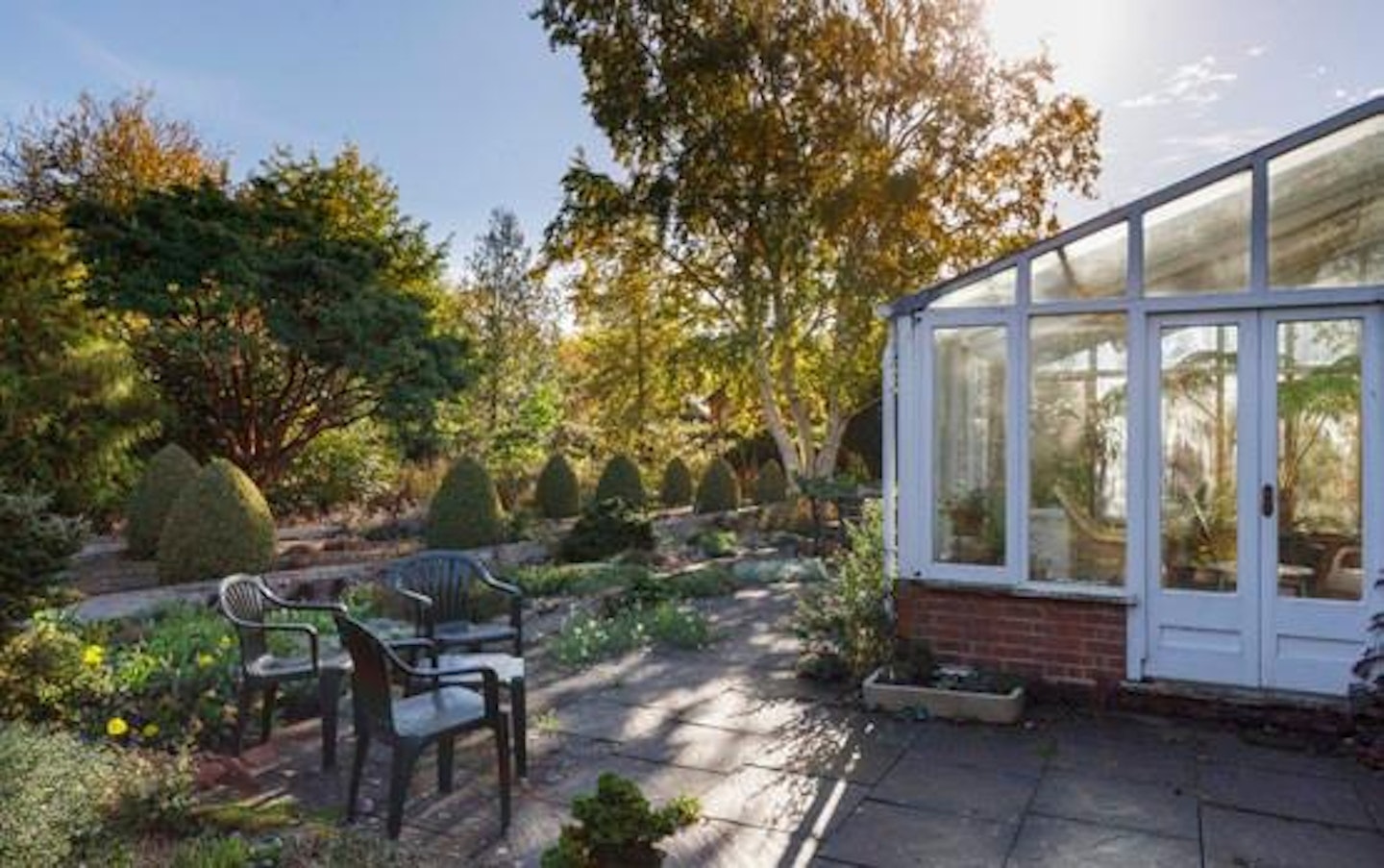GARDEN TOUR
Marina Jordan-Rugg visits a garden full of unusual trees and plants wrapped around a 17th century cottage, resulting in a wonderfully otherworldly landscape
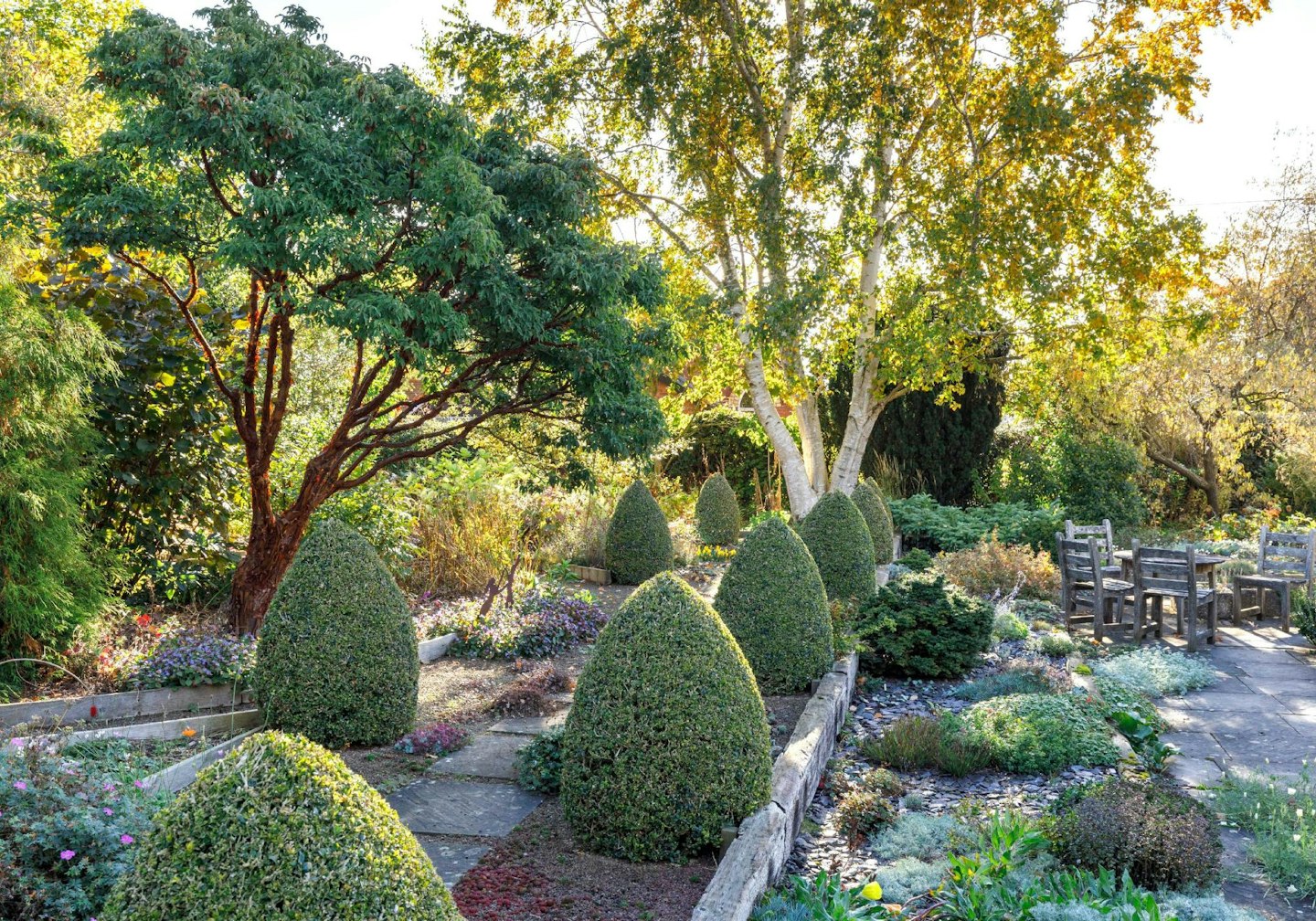
Roger Norman is an avid plant collector. Indeed, he started collecting them when he was only five years old. And amazingly, some of those early specimens still remain with him now – almost 80 years later – within the botanical bonanza of plants that grace the borders and greenhouses at Ivy Croft garden in Herefordshire.
“When my late wife Sue and I arrived at Ivy Croft over 25 years ago, the garden was simply four one-acre pasture fields with a veg garden around the house that had probably been there for about 400 years,” says Roger. “It was open on all corners and very cold, so shelterbelt planting was key. “The hedges that divided the fields had been flailed extensively, so we decided to let the plants return to their natural state. We began planting almost all the trees you can see today and planning the outlines of the garden.”
Sue and Roger travelled widely to source their unusual plants from abroad and specialist nurseries together with gifts from friends with a similar passion. They received their impressive Abies pinsapo conifer from the late plantswoman Veronica Cross, who received it from former RHS President Chris Brickell, who grew it from wild collected seed. “Abies pinsapo is one of my favourite trees, but I had no idea that it’s a pre-Ice Age relic!” says Roger.
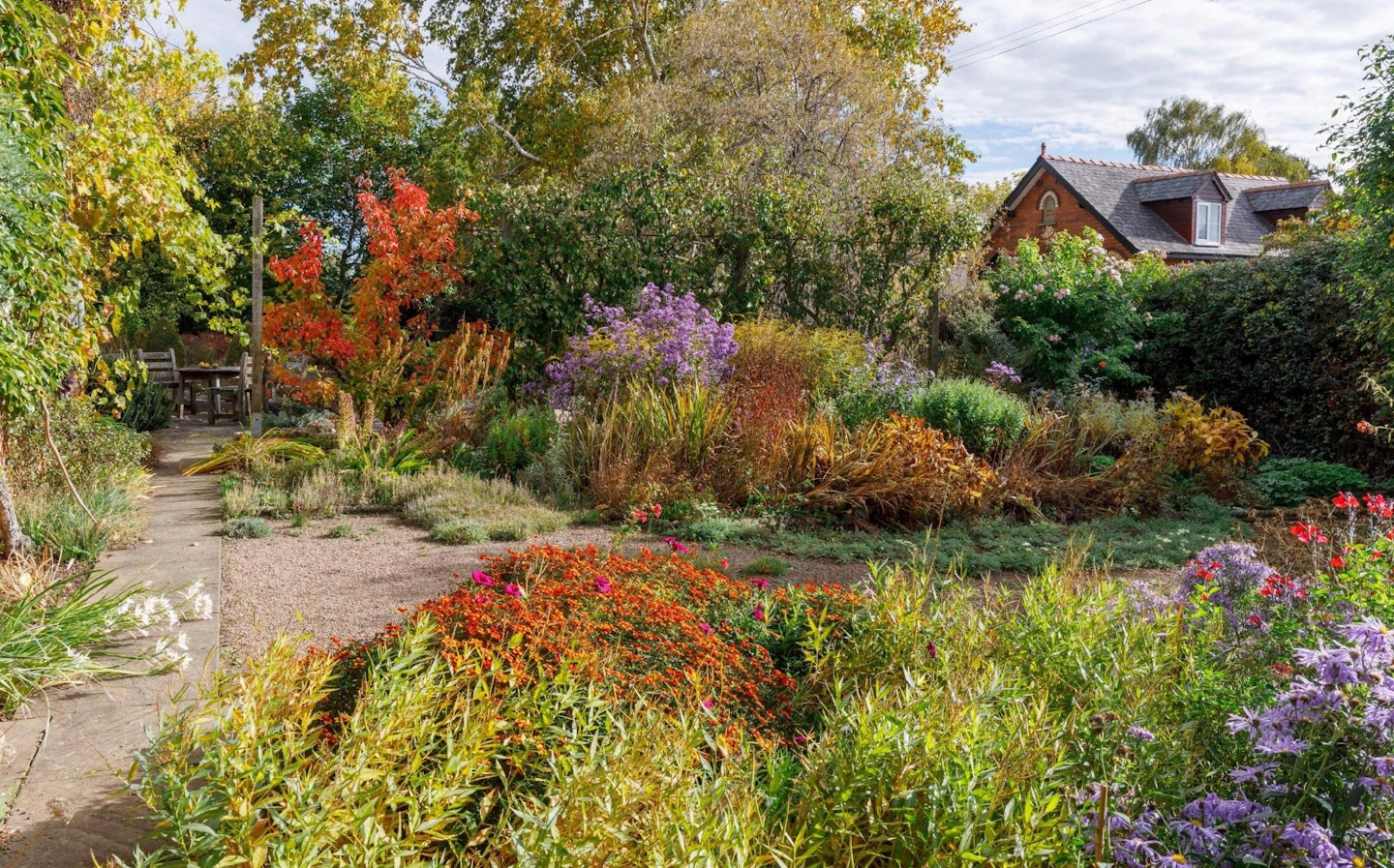
Autumn comes alive with pear ‘Doyenné du Comice’, orange tagetes, Eucomis bicolor, golden Solidago rugosa ‘Fireworks’, salvia ‘Hot Lips’, rosa ‘Blush Noisette’ and aster ‘Prairie Purple’
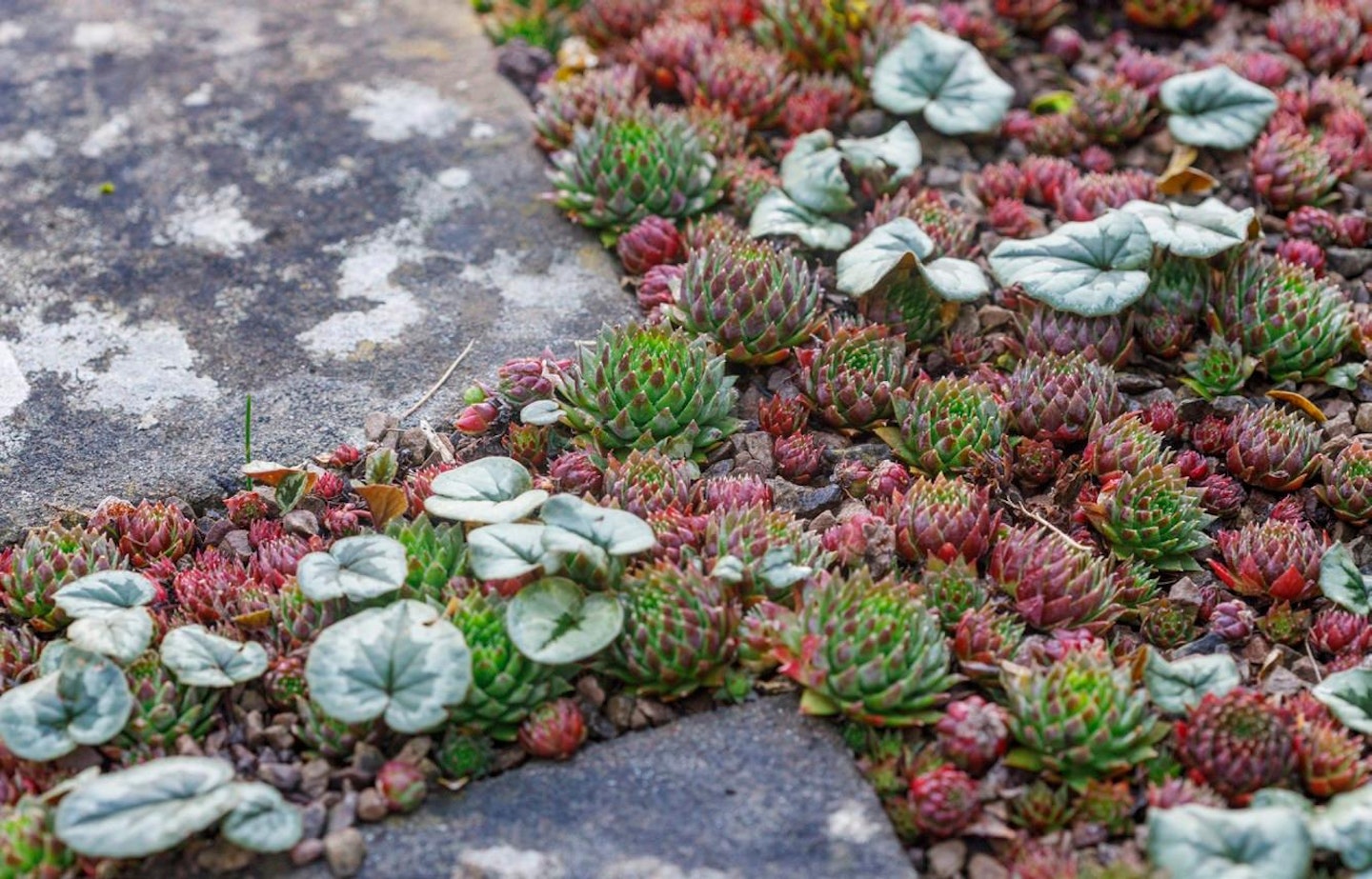


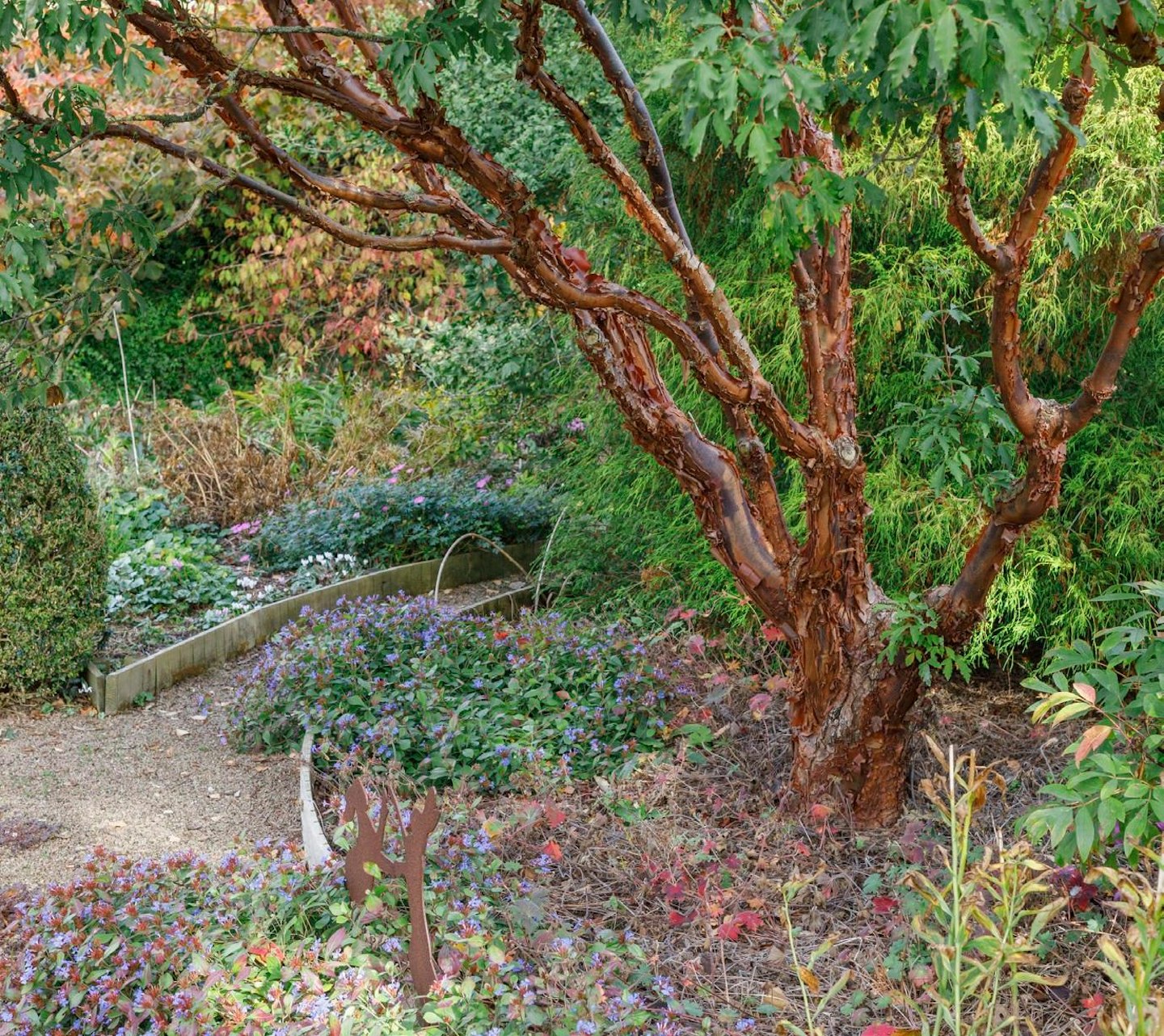

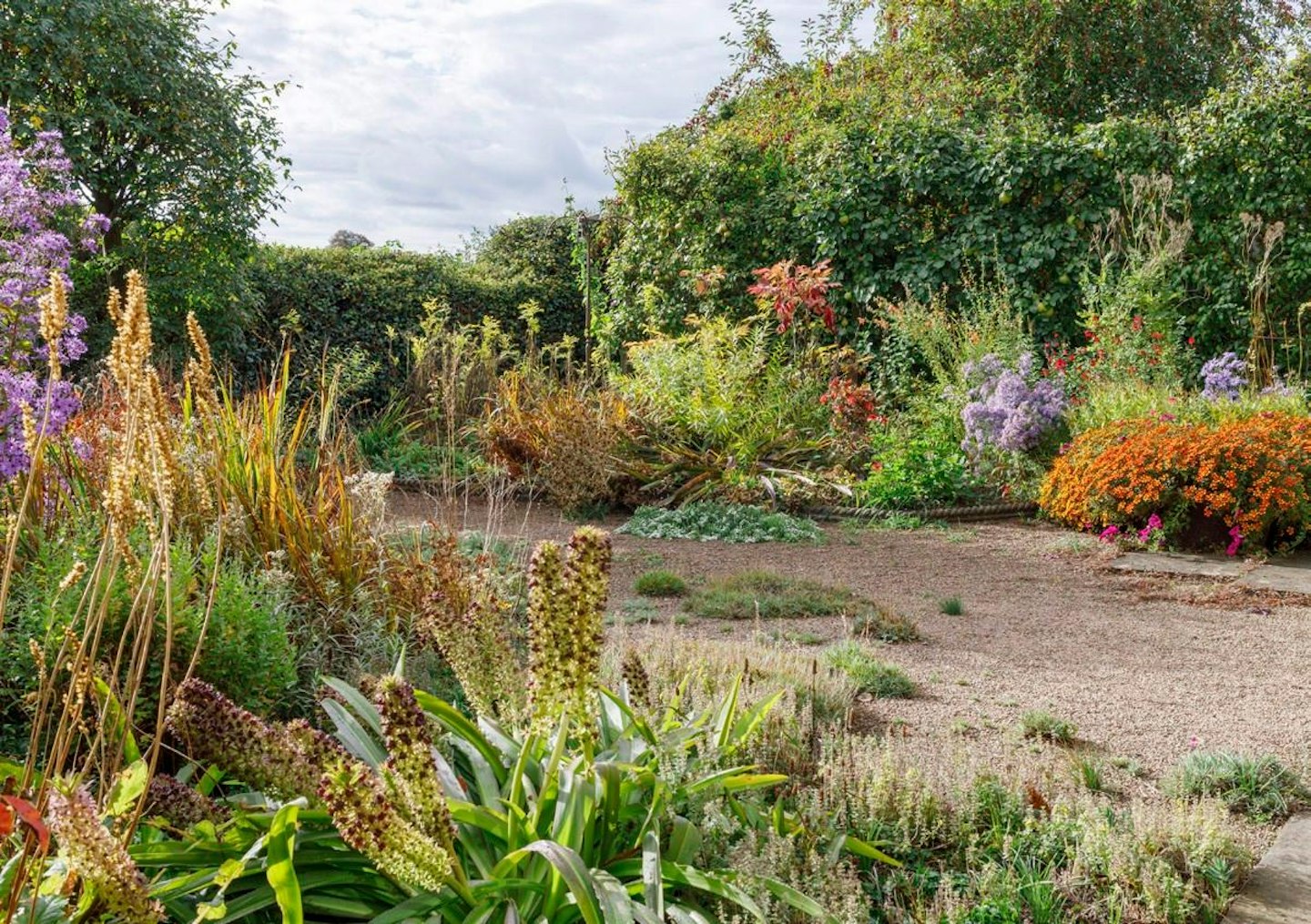
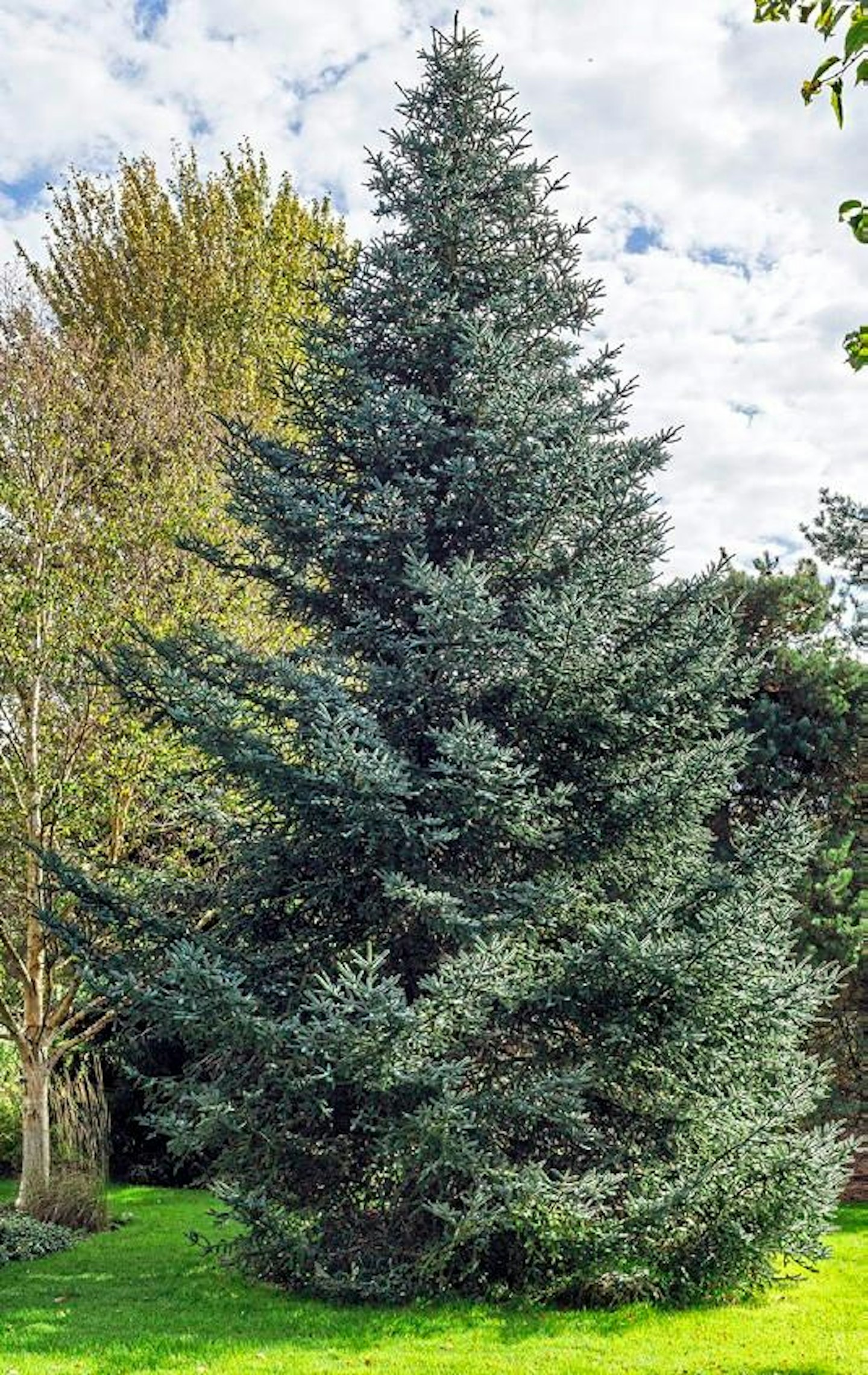
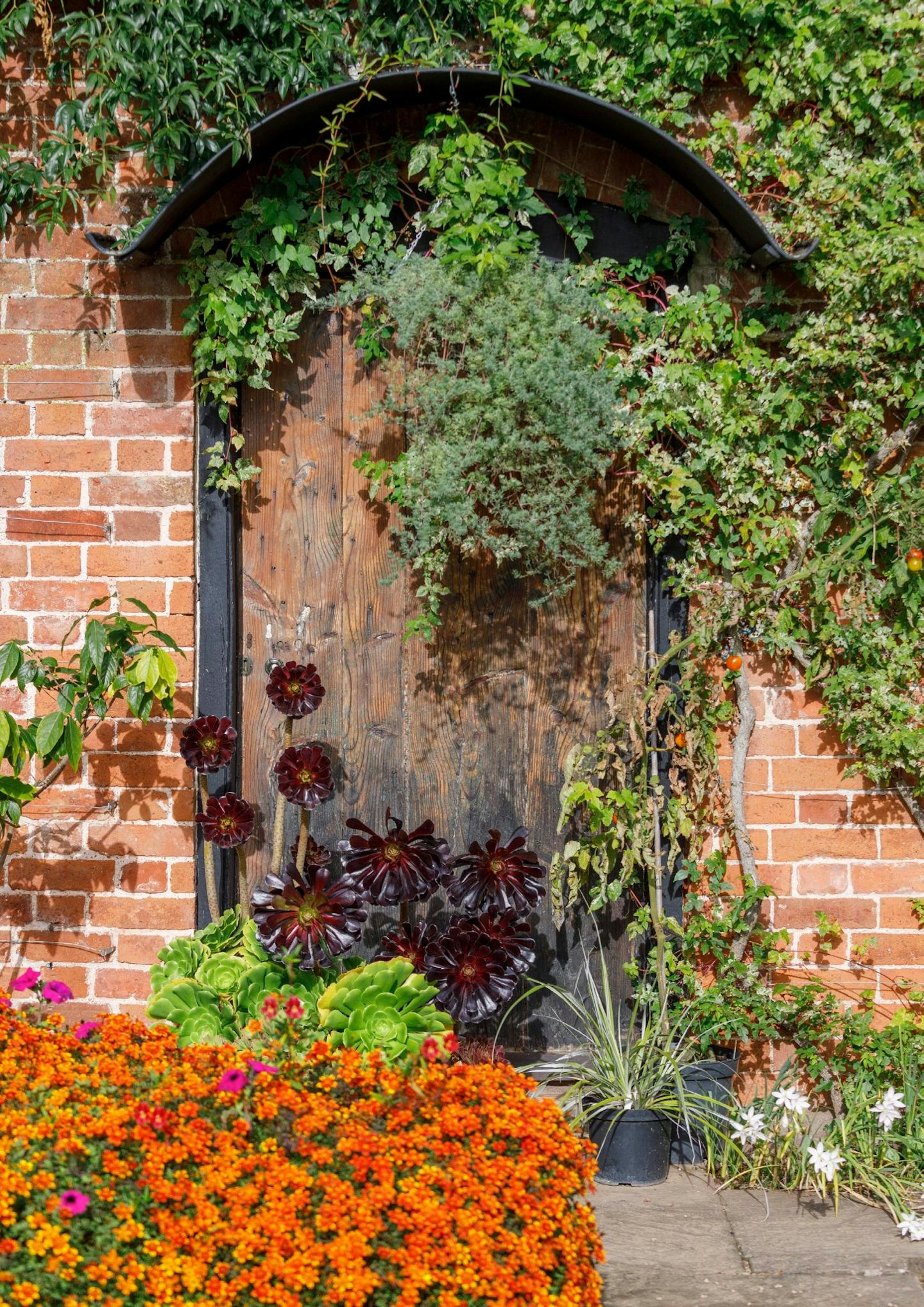
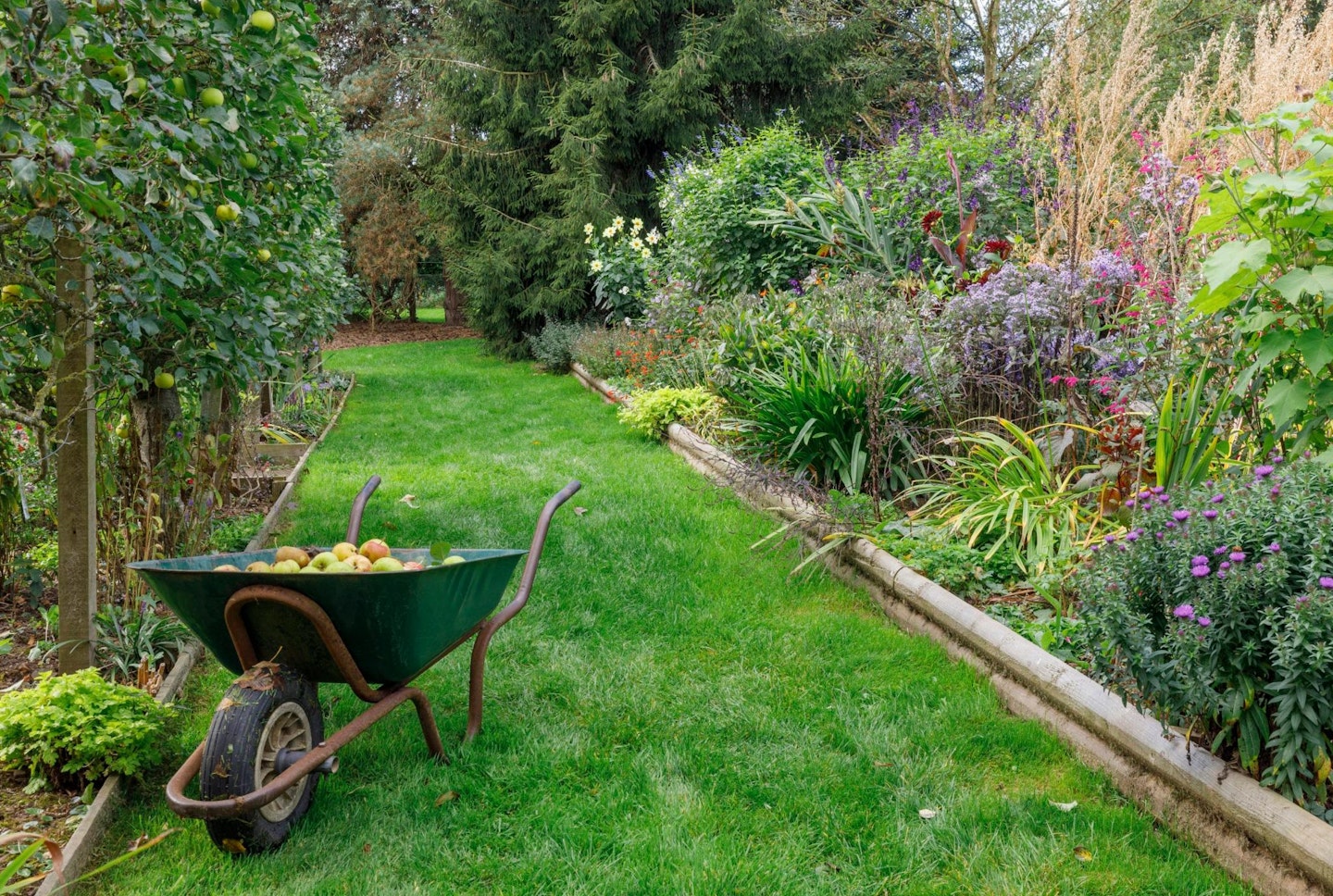
The top fields are mainly grassland with a native species wood and orchard; on the bottom field, they established a nursery, windbreak and vegetable area and developed a garden to enjoy for themselves and share with others. They developed a long border carefully so they could still enjoy a lovely view to the north, but the plants have grown so abundantly in the alluvial silt soil that the long-ranging vista eventually disappeared, to be replaced by an abundance of wonderfully colourful and textural plants.
The garden contains chickens, a substantial vegetable garden surrounded by espaliered apple trees – a design idea copied from historic Hergest Croft Gardens –and other fruit trees. The cottage was a cider house from 1642 to 1947, so a small orchard of perry pears was planted to mark the cider tradition associated with their home.
The couple’s love of plants shines through the garden, which offers interest at all times of the year. In early autumn there’s a blaze of colour from rusty orange tagetes, 43 species and cultivars of pink, purple and white asters, blue-flowered ceratostigma with the resilient blooms of hardy geraniums, multi-coloured dahlias, red-flowered salvias and splashes of carmine petunias lingering until the arrival of the first frost. At ground level, golden crocus-like sternbergia, purple colchicums, autumn crocus and cyclamen and early snowdrops lead the show through autumn and into winter.


Coniferous trees, such as a majestic weeping Chamaecyparis lawsoniana ‘Imbricata Pendula’ and the Abies pinsapo, provide striking form, together with a pleached lime avenue with a running sequence of box balls beneath. Clipped topiary forms and hedges are key structural elements within the garden. Eye-catching, peeling, glossy and rough-textured bark offers interest from multi-stemmed silver birches and Acer griseum, with splashes of colour from the orchard fruits and glorious, red-berried Berberis jamesiana and Crataegus durobrivensis.
In spring the garden is packed with snowdrops and other early bulbs, daffodils and tulips, while in summer the borders burgeon with alliums, poppies, lilies, astrantia, thalictrum and delphiniums juxtaposed with ferns, grasses and the fresh green backdrop of the structural hedges and evergreens.
In short, Ivy Croft is truly a glorious garden in every season –and you just might find, excitingly, that the plants are not actually all that familiar.
PHOTOS: NEIL HEPWORTH
IN THE GARDEN WITH
Roger Norman

AT Ivington Green, Herefordshire SIZE 4x 1 acres
SOIL Alluvial silt
FEATURES Borders, snowdrops, raised beds, surprising trees and containers giving all-year interest.
VISIT Wednesday, October 2and 9, and by appointment. Visit ngs.org.uk to book.
